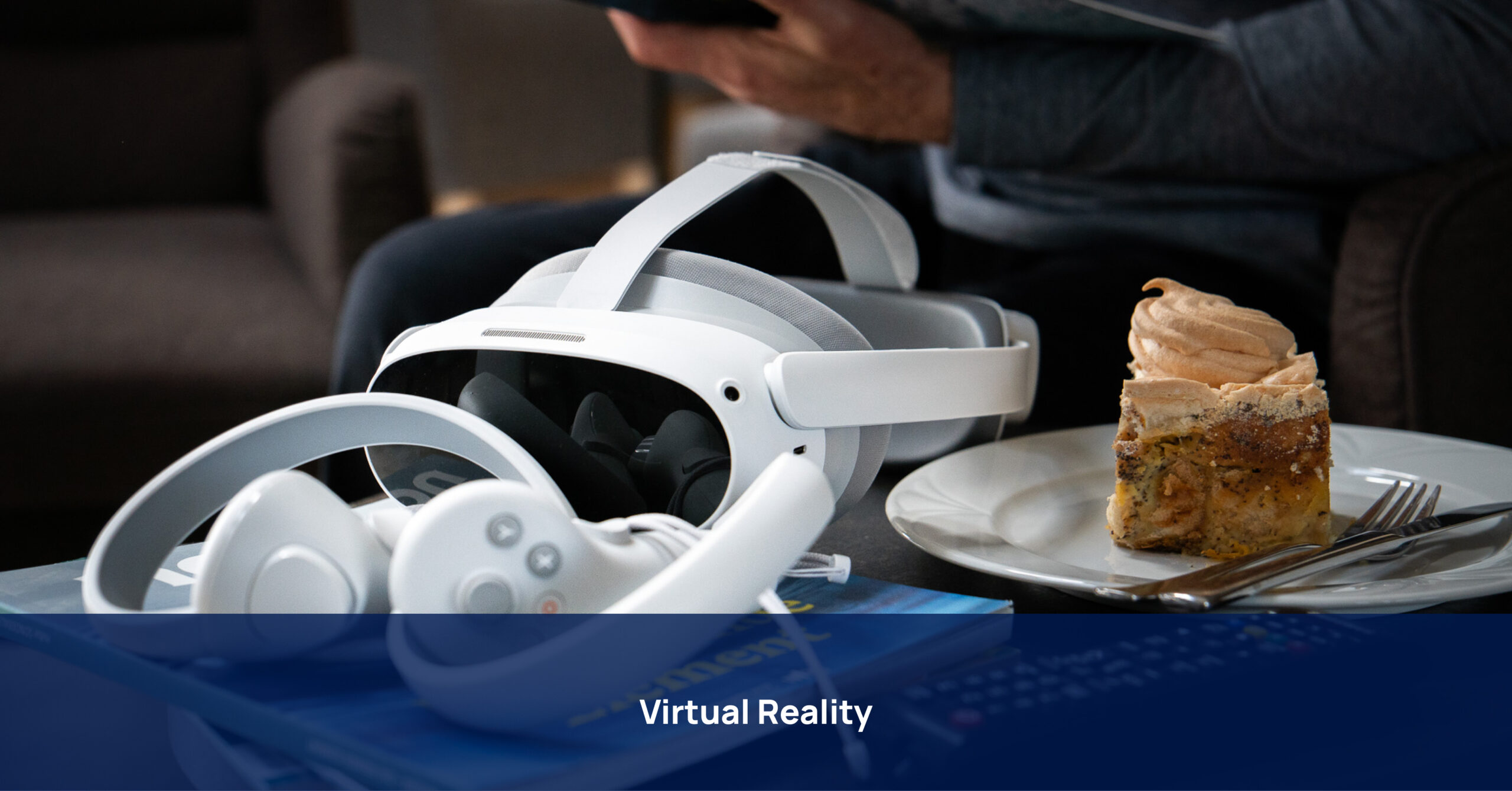
What is Virtual Reality or Virtual Reality (VR)?
Virtual reality refers to a computer-generated three-dimensional simulation of reality that can be experienced by a person through special devices such as VR glasses and controllers. An immersive experience is created via image and often additional sound. For the person concerned, the impression is created that he or she is physically present in this virtual world. It is often possible to interact with virtual reality.
Let’s look at this using the example of teora mind. To use the application, VR goggles (also called head-mounted display) and at least one controller are required. If you put on the VR glasses and start the teora mind application, you can enter a kitchen, for example. The computer-generated virtual image of the kitchen overlays the view of the real environment and nothing else is visible. This virtual kitchen can be walked through, objects can be moved and, for example, the coffee machine can be operated. Interaction with objects is enabled via the controller. The virtual objects can be tapped or picked up at the touch of a button. Movement through space is created by actually walking in real space.
Virtual reality is now used in many fields. It is often used for entertainment, education, and in recent years, increasingly in medicine. Medical applications include motor therapy, stress reduction therapy, anxiety therapy, and cognitive therapy.
Differences to Augmented Reality and Mixed Reality
Augmented reality (AR), which translates as augmented reality, focuses on the real world, unlike VR. As the name implies, it is merely extended with additional elements. These additional texts, images or three-dimensional elements can be displayed via external devices such as smartphones. One example of augmented reality is see-through head-up displays used in modern vehicles that show information such as speed, traffic signs or navigation instructions.
Mixed reality (MR) is often equated with augmented reality, as both combine reality with additional virtual elements. However, it should rather be understood as a further development of the latter. While with AR the additional information is displayed in an external screen such as the head up display, the goal of MR is to seamlessly insert these complementary elements into the viewer’s field of vision, adapting to what is happening in real time. This is done, for example, via glasses or contact lenses that display additional information only when it is needed. One medical application example of MR is to project X-ray, MRI or CT images three-dimensionally and in color as a hologram into space. Goggles based on MR are also already being used during operations.
Extended Reality (XR) as a collective term
Extendended reality or cross reality encompasses all technologies that are based on a combination of computer-based virtual and real environments. These are made accessible via a wide variety of external devices (so-called wearables). Extended Reality thus also includes Virtual Reality in addition to Augmented Reality and Mixed Reality.
